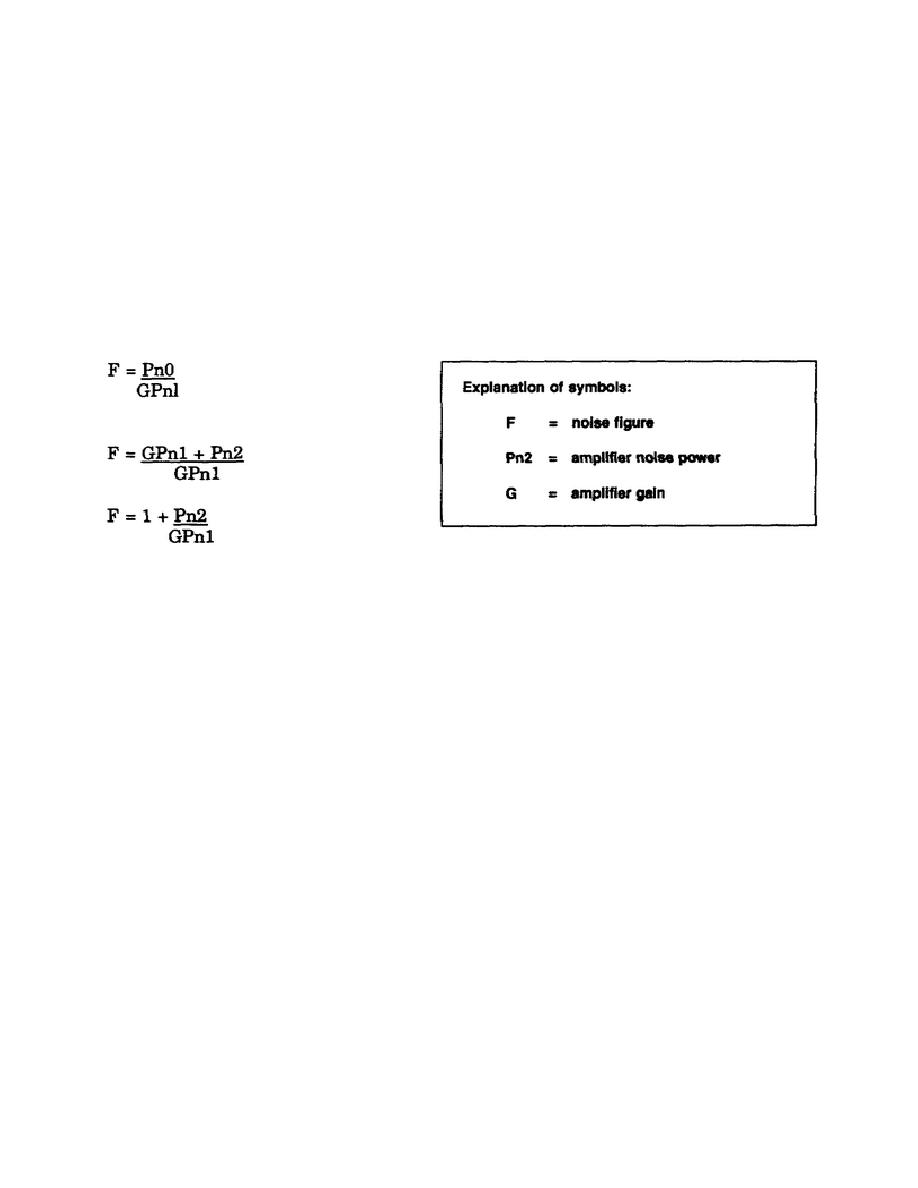
output of an amplifier (Pn0) consists of the power contributed from two separate power sources-noise power
developed within the amplifier (Pn2) and matched source noise power (Pn1) applied to the amplifier's input.
Since the input noise power undergoes amplification within the amplifier stage, the input noise power (Pn1) is
multiplied by the gain (G) of the stage. The noise output can then be written as-
Pno = GPn1 + Pn2
4. If the amplifier were a perfect amplifier and contributed no noise of its own, the total noise output of the
amplifier would be GPn1. However, any practical amplifier contributes some noise.
5. The noise figure of an amplifier is simply the noise output at the load (Pn0) divided by the matched source
noise power (Pn1) and the gain (G) of the stage.
Pn1 = matched source noise power at a temperature of 290€ Kelvin.
6. The noise figure may be quoted as a number or a ratio, or in terms of decibels. For example, a noise figure
of 2 and a noise figure of 3 dB have the same meaning. Both expressions indicate that the noise from the
amplifier and the noise from the matched source are the same. The noise figure in decibels can be determined
by formula.
F = 10 log
1 + Pn2
dB
GPn1
LEARNING EVENT 10: EQUIVALENT NOISE TEMPERATURE
1. Sensitivity is one of the most important receiver parameters. It is defined as the minimum input signal
required to produce a specified output signal having a specified signal-to-noise ratio.
2. The signal-to-noise ratio of a receiver is determined by the amount of receiver gain and the noise
contribution. Generally this ratio is expressed as SIN. We are most concerned with the noise contribution of a
receiver and therefore we use the expression Pn2/G.
SS0031
3-8



 Previous Page
Previous Page
